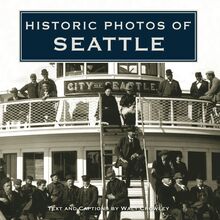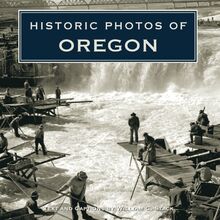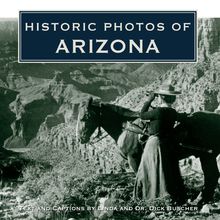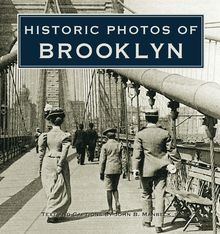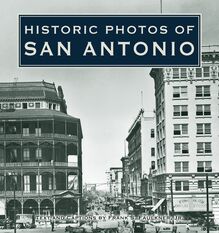Historic Photos of Washington, D.C. , livre ebook
168
pages
English
Ebooks
2007
Vous pourrez modifier la taille du texte de cet ouvrage
Obtenez un accès à la bibliothèque pour le consulter en ligne En savoir plus
Découvre YouScribe et accède à tout notre catalogue !
Découvre YouScribe et accède à tout notre catalogue !
168
pages
English
Ebooks
2007
Vous pourrez modifier la taille du texte de cet ouvrage
Obtenez un accès à la bibliothèque pour le consulter en ligne En savoir plus
Publié par
Date de parution
01 avril 2007
Nombre de lectures
2
EAN13
9781618587008
Langue
English
Poids de l'ouvrage
40 Mo
Publié par
Date de parution
01 avril 2007
EAN13
9781618587008
Langue
English
Poids de l'ouvrage
40 Mo
HISTORIC PHOTOS OF
WASHINGTON, D.C.
T EXT AND C APTIONS BY M ATTHEW G ILMORE AND A NDREW B RODIE S MITH
The first separate building to house the Library of Congress, the Jefferson Building opened to the public in 1897. Architects Smithmeyer and Pelz based the front facade partly on the Paris Opera House. The library was the first fully expressed beaux-arts building in Washington, and more than 40 painters and sculptors were involved in the building s decoration.
HISTORIC PHOTOS OF
WASHINGTON, D.C.
Turner Publishing Company
200 4th Avenue North Suite 950
Nashville, Tennessee 37219
(615) 255-2665
412 Broadway P.O. Box 3101
Paducah, Kentucky 42002-3101
(270) 443-0121
www.turnerpublishing.com
Historic Photos of Washington, D.C .
Copyright 2007 Turner Publishing Company
All rights reserved.
This book or any part thereof may not be reproduced or transmitted in any form or by any means, electronic or mechanical, including photocopying, recording, or by any information storage and retrieval system, without permission in writing from the publisher.
Library of Congress Control Number: 2006937079
ISBN-13: 978-1-59652-329-6
ISBN: 1-59652-329-8
Printed in the United States of America
07 08 09 10 11 12 13 14-0 9 8 7 6 5 4 3 2 1
C ONTENTS
A CKNOWLEDGMENTS
P REFACE
T O THE E ND OF THE C IVIL W AR E RA (1860-1879)
T HE N EW W ASHINGTON TO THE G ILDED A GE 1880-1920)
I SOLATIONISM TO W AR (1921-1949)
P OSTWAR G ROWTH AND D ECLINE (1950-1970)
N OTES ON THE P HOTOGRAPHS
This image depicts the cash vault inside the Department of Treasury in the 1910s.
A CKNOWLEDGMENTS
This volume, Historic Photos of Washington, D.C ., is the result of the cooperation and efforts of a number of organizations and individuals.
We would like to thank in particular the Library of Congress and the Washingtoniana Division of the D.C. Public Library.
We would also like to thank staff at the Washingtoniana Division and the Washington Star Collection for their assistance:
Mark Greek, Ryan Semmes, Faye Haskins, Jason Moore, Michelle Casto, and the chief of the division, Karen Blackman-Mills. Don Hawkins and Michael Harrison also provided useful insights.
- Matthew Gilmore and Andrew Brodie Smith, Authors
P REFACE
Washington, D.C., has hundreds of thousands of historic photographs, scattered through thousands of institutions across the United States. Many are widely published. This book brings together about 200 images from the collections of the Library of Congress and the Washingtoniana Division of the D.C. Public Library.
The photographs chosen for inclusion here suggest the richness of the collections from which they came. The Library of Congress images include those of numerous acclaimed photographers, including Frances Benjamin Johnston, Lewis Hine, and Gordon Parks, as well as lesser known photographers of the Farm Security Administration-Office of War Information, like Esther Bubley, Martha Roberts, David Myers, and John Vachon. The Washingtoniana photographs include those from the collections of Hugh Miller and Joseph Curtis.
The book is divided into four sections. The first section covers the Civil War era. The second section spans the 1880s to the 1920s. Section 3 moves from the 1920s to 1949. Section 4 concludes the book covering the 1950s to 1968.
Each section contains photographs illustrating the life and fabric of Washington, particularly that of a vanished downtown Washington. One can see the slow changes in (or remarkable persistence of) the architecture of Pennsylvania Avenue. Similarly, change came slowly to F and 7th streets. Much more dynamic is the street life-pedestrians, horses, wagons, streetcars, automobiles, and buses. We can measure the passage of time as these things change. In addition to hometown Washington, we see the evolution of the city of political theater, from the Grand Army Review and its diminishing echoes-the Grand Army of the Republic encampments, the presidential inaugural parades, and other marches on Pennsylvania Avenue-until groups swelled far beyond the capacity of that space and took to the Mall. We illustrate a city under threat in the Civil War to a city of threatened promise in 1968, through its downtown, citizens, and monumental works.
The goal in publishing this work is to provide broader access to a set of extraordinary photographs. The aim is to inspire, provide perspective, and evoke insight that might assist officials and citizens, who together are responsible for determining Washington s future. In addition, the book seeks to preserve the past with respect and reverence.
With the exception of touching up imperfections caused by the vicissitudes of time and cropping where necessary, no other changes have been made. The focus and clarity of many images is limited to the technology of the day and the skill of the photographer who captured them.
We encourage readers to reflect as they explore Washington, stroll along its streets, or wander its neighborhoods. It is the publisher s hope that in making use of this work, longtime residents will learn something new and that new residents will gain a perspective on where Washington has been, so that each can contribute to its future.
- Todd Bottorff, Publisher
The Supreme Court building, inspired in part by the design of Roman temples, was completed in 1935. The design belonged to renowned New York architect Cass Gilbert, who puts his likeness on the pediment over the central entrance. The building is made of a brilliant white Vermont marble.
T O THE E ND OF THE C IVIL W AR E RA
(1860-1879)
Washington, D.C., began as an act of political will as the new nation agreed with its President (and most revered political figure), George Washington, to start a city de novo on the banks of the Potomac River. The new city, bound up together with its neighbors Georgetown and Alexandria in the new District of Columbia, suffered the growing pains typical of any new city. However, such pains were thrown into high relief by the privileged status of the young city as capital of the nation. To complicate matters even further, Congress didn t invest as much in the venture as some thought befitting. Washington s mud and dust, more characteristic of any struggling frontier town, met with complaint and vitriol from foreign visitors more familiar with older American cities, like Boston, New York, and Philadelphia, and the ancient capitals of Europe.
Washington had lots of growing to do. By the time the Civil War broke out, it bore an established sleepy Southern town image, soon to be violently disrupted. The war brought a flood of newcomers: soldiers, politicians, hangers-on of all sorts. The increased population strained the already inadequate resources of the city, and by the end of the war, the city was in desperate need of refurbishment. The newly reorganized and unified city government in the 1870s made that investment, paving, planting, and plumbing the city. But growth and development would not come without economic crisis and political fallout. When things got messy, financially and politically the federal government again reorganized city government, establishing an apolitical governing body of appointed commissioners who continued the job of building the New Washington.
In what amounted to a great psychological victory for Union forces, architect of the Capitol Thomas U. Walter designed and oversaw the construction of a stunning new dome for the Capitol building during the Civil War. This photo captures the construction as of the time of Lincoln s first inauguration in 1861.
This view of the March 4, 1861, inauguration of Abraham Lincoln comes from a photograph album belonging to Benjamin Brown French. French served as Marshal-in-Chief at Lincoln s inauguration. A strong Lincoln supporter, according to his diary, French got into position where [he] could hear every word and was delighted.
Soon after Lincoln s inauguration, the Union split and Washington was to become home to thousands of troops. Camp Cameron lay at the foot of what would become the intersection of Foxhall Road and MacArthur Boulevard, in what is now the neighborhood of Palisades.
The General Post Office building at the corner of 8th Street and E Street, N.W., was designed by architects Robert Mills (the Washington Monument) and Thomas U. Walter (the U.S. Capitol dome). It was the first marble building in Washington and housed the nation s first public telegraph office. It served as a hospital during the Civil War and housed General Pershing s office at the close of World War I.
Montgomery Meigs designed the Pennsylvania Avenue bridge over Rock Creek, constructed between 1857 and 1862. As a part of the Washington Aqueduct, the iron pipes carried the city s water supply. Too narrow for its traffic load from the start, it was replaced with a new bridge, constructed around the cast-iron pipes and completed in 1916.
This famous view, taken from the top floor of the General Post Office, shows the original south wing of the Patent Office and some of the surrounding wood and brick domestic architecture characteristic of early Washington city (ca. 1846).
In 1861 there were 800 iron and 30 brass cannons at the Arsenal (some of which are visible here). The arsenal was located at Greenleaf Point, at the junction of the Potomac and Anacostia rivers, and was joined in 1829 by the penitentiary designed by Charles Bulfinch. The complex was later named Fort Humphries (and now Fort McNair).
An 1860s view of the Chesapeake and Ohio Canal, the Potomac, and the Aqueduct Bridge to Alexandria, taken from a spot below Georgetown University. Neither the C O Canal nor the (short-lived) Alexandria Canal were an economic success for Washington, the Alexandria Canal closing in 1886 and the C O in 1923. Georgetown became an economic backwater as its harbor silted up and the canals failed.
The Sanitary Commission (founded by citizens including Hen



